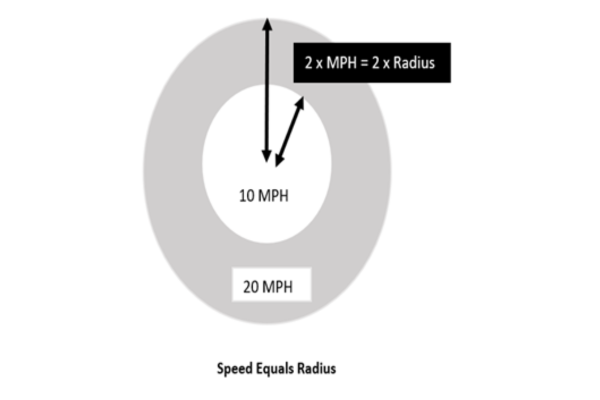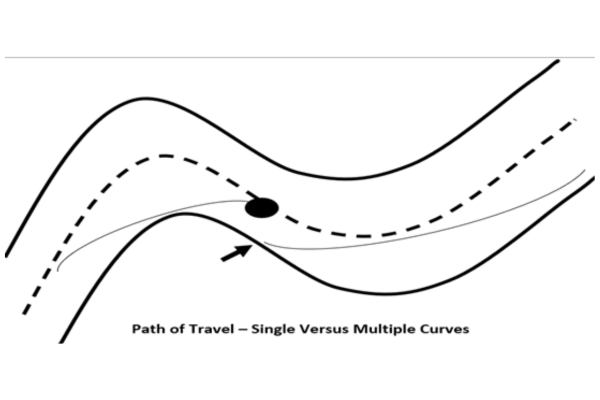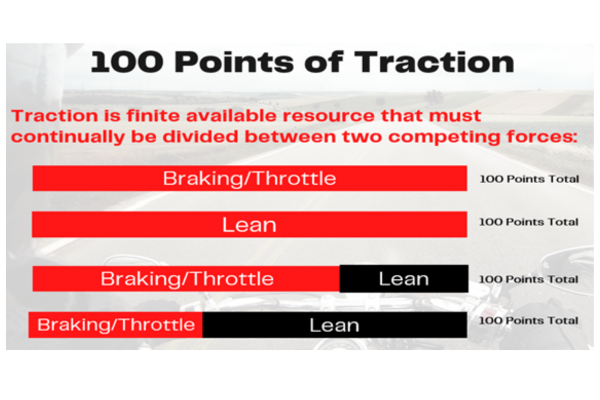2 Wheel Motorcycle
Riding Guide
Motorcycle Safety Training Guide
Motorcycle Rider's Pledge
Riding a motorcycle is inherently riskier than any other mode of transportation. It requires more skill and awareness than driving a car. When riding you are more vulnerable to weather, being seen and injury. Riders must make every effort to minimize risk as there is very little room for error. Putting safety first is a fundamental aspect of being a good rider.
- I am the only one responsible for my safety
- I will do all possible to make my ride safer for me and others
- I will utilize good judgement before getting on the bike
- I commit to wearing all the gear, all the time (ATGATT)
- I have sustained focus to sense and adapt to changes during my ride
- I will be a life-long learner
- I will be an ambassador for my sport
Washington State Motorcycle Laws
To learn more about the individual motorcycle laws click on the RCW or WAC below to read the full details.
RCW 46.04.330 – Definition of motorcycle
RCW 46.16A.200 – One Horizontal Plate
RCW 46.20.100 – under 18-years old permission and training
RCW 20.500 – Endorsement requirements
RCW 46.20.505 – Endorsement fees
RCW 46.20.515 – Skills testing
RCW 46.20.520 – Safety education
RCW 46.30.020 – Liability insurance required
RCW 46.37.522 – Running lights
RCW 46.37.523 – Headlights
RCW 46.37.525 – Lamps
RCW 46.37.527 – Brakes
RCW 46.37.528 – Stopping standards
RCW 46.37.530 – Mirrors, eye protection, children 5+ Years, DOT helmet and strap
RCW 46.37.535 – Helmet when renting
RCW 46.37.537 – No modified exhaust
RCW 46.37.539 – Horn Muffler mirrors tires
RCW 46.61.120 – Overtaking on left
RCW 46.61.460 – Headlight required speed over 35 miles per hour
RCW 46.61.608 – No lane splitting, one vehicle per lane, two motorcycles per lane
RCW 46.61.610 – Passenger seat and pegs
RCW 46.61.611 – Bar height<30″ above seat
RCW 46.61.612 – Leg on each side of motorcycle
RCW 46.61.613 – Motorcycle restrictions suspended for parade
RCW 46.61.614 – Can’t attach to other vehicles
RCW 46.61.660 – Passengers and animals
RCW 46.61.670 – Can’t ride off side of road
WAC 468.510.010 – Motorcycles permitted in HOV
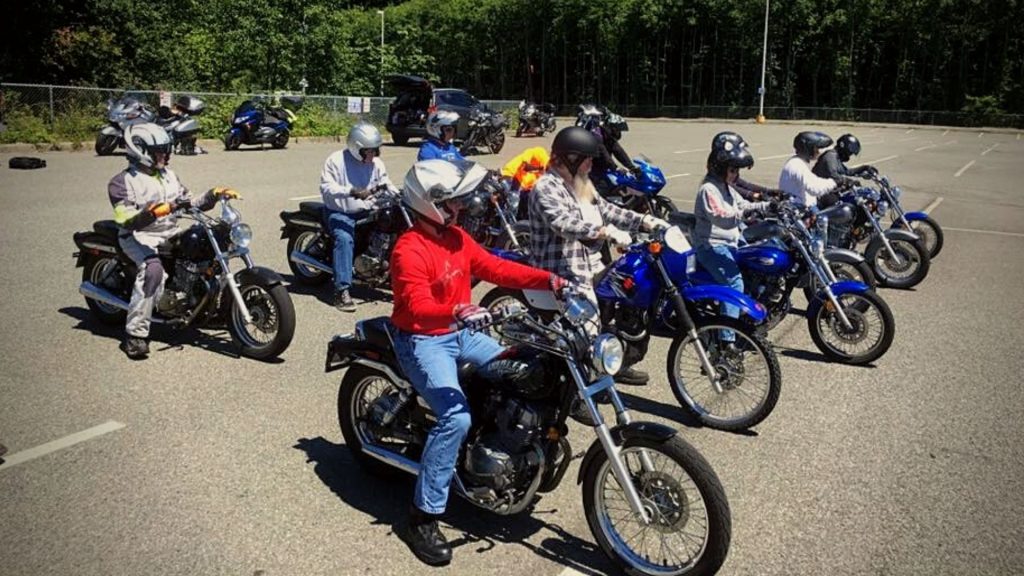
Ride Your Own Ride
Motorcycle Braking
- Tires take tremendous gradual load, but not an abrupt change in load
- Changing any input abruptly can exceed any amount of traction
- Smooth inputs maximize available traction
- Changing inputs, like brakes for lean, must be exchanged with finesse
- Load front tire with 5 percent of brake
- Progressively squeeze, increasing rate of squeeze as friction builds
- Most braking occurs at end of braking
- Ease off last 5% to minimize suspension rebound, freeing traction

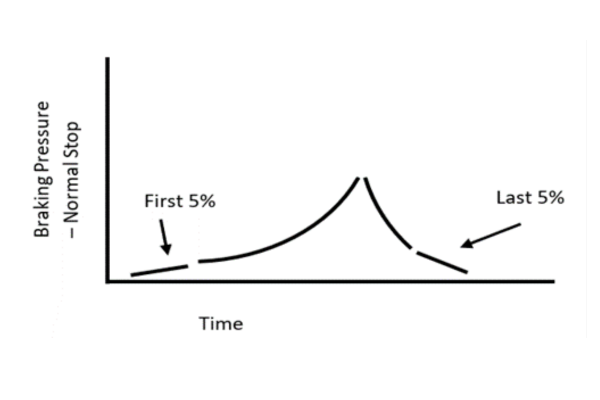
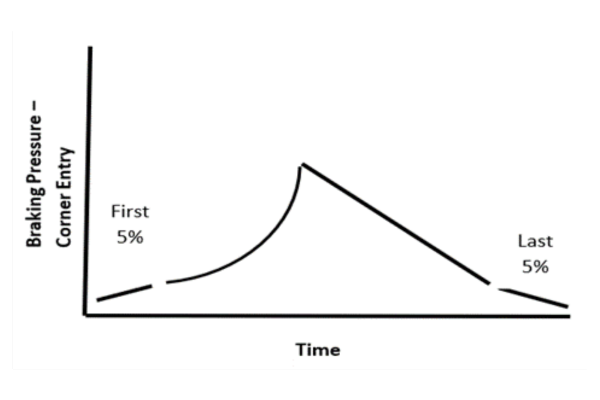
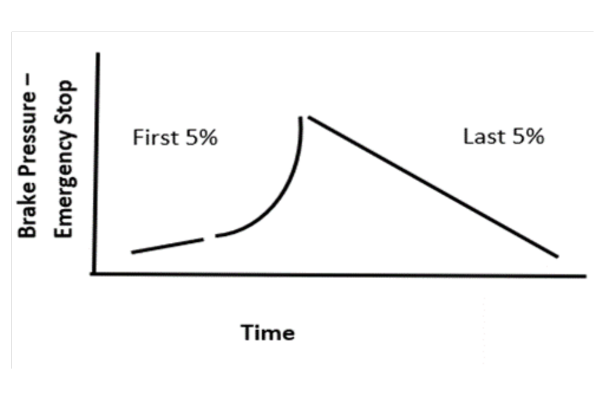
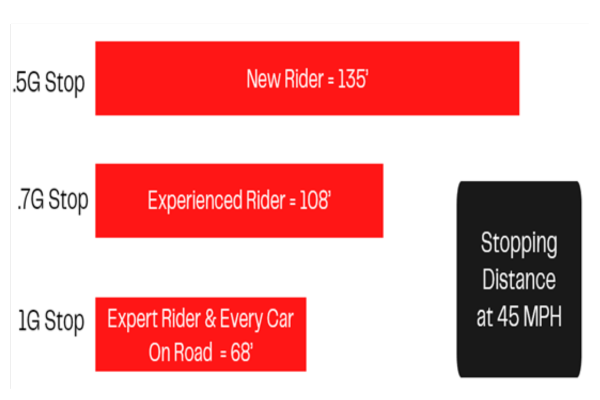
3 Cs
What Can I See?
Actively search using your central and peripheral vision.
What Can’t I See?
Identify areas where threats can be hiding. Check your mirrors often.
What Could Happen?
Adjust speed and position to SEE and BE SEEN. Create space.
Pre-Ride Checklist
Washington Motorcycle Safety Training
Rider
Rested & Physically Able
Mentally Alert
Judgement
Illness
Emotions
Have a Plan
Ride Your Own Ride
Environment
Traction
Moisture
Temperature
Wind
Visibility
Forecast
Other Conditions
Gear
Helmet
Eye Protection
Gloves
Jacket
Pants
Boots
Back-Up’s
Motorcycle
Tire Pressure
Tread
Fuel
Brakes
Lights
Load
Controls
Cornering and Motorcycles
- Identify the entry point of the corner
- See radius of curve to determine speed
- Turn your head & look as far as you can through the corner
- Establish exit for path of travel to ride through end of the corner
- Straighten out corner, which gives rider a GREAT SAFETY MARGIN
- Scan surface for hazards to determine best Path of Travel
- Body Position – Tighten radius, less lean, stability, turn bike, max traction
You don’t have your motorcycle endorsement until you add it to your drivers license.
Motorcycle endorsement qualifying courses are for riders that have a current Washington motorcycle permit and are ready to earn their full motorcycle endorsement.

